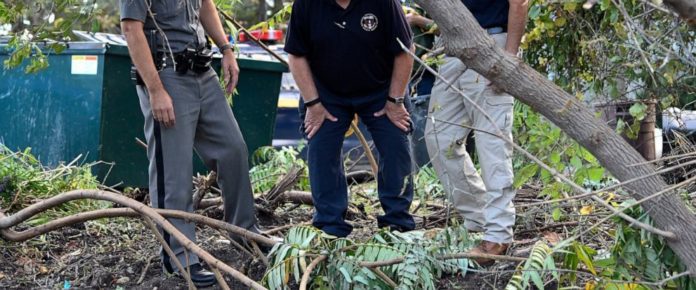

By MICHAEL HILL AND TOM KRISHER, ASSOCIATED PRESS
ALBANY, N.Y. — Oct 2, 2019, 4:05 PM ET
Federal inspectors recommended stricter regulations Wednesday for safety belts and passenger seats in new vehicles stretched into limousines, saying tighter standards might have made a difference in an upstate New York limousine crash that killed 20 people.
The National Transportation Safety Board released the recommendations almost a year after a Ford Excursion SUV that had been modified into a stretch limo blew through a T-intersection in rural Schoharie and slammed into an earthen embankment. The crash near a popular country store on Oct. 6, 2018, killed the driver, 17 passengers on a birthday outing and two pedestrians.
It was the deadliest transportation disaster in the United States in about a decade.
The agency recommended lap-shoulder belts in all seating positions and that limousine seating systems meet minimum crash safety performance standards. The recommendations would apply only to new vehicles stretched into limousines, not to existing limousines, the NTSB said. The agency also cited limousine crashes in Illinois and New Jersey in making the national recommendations.
In the New York crash, the NTSB found some seats separated from their anchorage points in the significantly modified vehicle, which included side-facing seats. None of the 17 passengers appeared to be wearing a seat belt at the time of the crash, the board said, but the poorly designed belts “would not have provided adequate protection” anyway. The driver was wearing his lap and shoulder belt and his air bag deployed, but the NTSB determined the front-end crash was not survivable from the driver’s seat.
The report said that “injuries to occupants within the passenger compartment might have been mitigated by a combination of adequate seat integrity, well-designed passenger lap/shoulder belts, and proper seat belt use.”
The vehicle was manufactured as an 8,600-pound (3,900-kilogram) SUV and was modified into a limousine weighing more than 13,000 pounds (5,900 kilograms), according to the report. Once modified, the limousine was not subject to some occupant safety standards that apply to other classes of vehicles.
“Most of the seats were not properly designed to ensure occupant protection,” NTSB Chairman Robert L. Sumwalt said in an interview with The Associated Press.
Prosecutors in New York allege the limo company’s operator, Nauman Hussain, allowed an improperly licensed driver to operate an “unserviceable” vehicle. Just weeks before the crash, the limo had failed a state inspection that examined such things as the chassis, suspension and brakes.
Hussain has pleaded not guilty to criminally negligent homicide, and his lawyer has said investigators rushed to judgment. His trial is scheduled for next year.
The NTSB, which investigates crashes and makes safety recommendations to other federal and state agencies, is expected to examine the cause of the crash in a future report.
The safety belt and seat strength recommendations will go to the National Highway Traffic Safety Administration, which has been reluctant to issue new safety regulations since President Donald Trump took office in 2017. During his campaign, Trump pledged to cut what he said are unnecessary government regulations.
“While we concur with NTSB’s recommendations, based on the administration’s complete failure since day one to issue new car safety regulations, it is unlikely there will be any significant new federal requirements regarding limousine safety,” said Jason Levine, executive director of the Center for Auto Safety, a nonprofit advocacy group.
In a statement, the highway traffic agency said it welcomed the safety board’s “initial analysis” and “looks forward to reviewing the full investigation, data, and analysis when they are complete.”
An NTSB spokesman said that when it issues recommendations for safety rules before an investigation is finished, it does so with the hopes that a federal agency will start on regulations quickly.
The safety board also recommended that New York transportation officials who perform inspections ensure that limo seat belts are functional. New York officials said that’s already standard protocol.
In addition, the safety board recommended that the National Limousine Association promote seat belt use. The trade group said a statement said it is prepared to support “prudent and consequential safety regulations.”
An attorney representing the estate of crash victims Adam and Abigail Jackson, who was one of four sisters killed in the crash, said Wednesday that in many ways the report raises more questions than it answers.
“Further, the slowness of the process keeps these families in limbo and does not allow them to grieve,” said Cynthia S. LaFave, “but rather leaves them with uncertainty which they must deal with while still struggling to go forward without their loved ones.”
———
Krisher contributed from Detroit.





